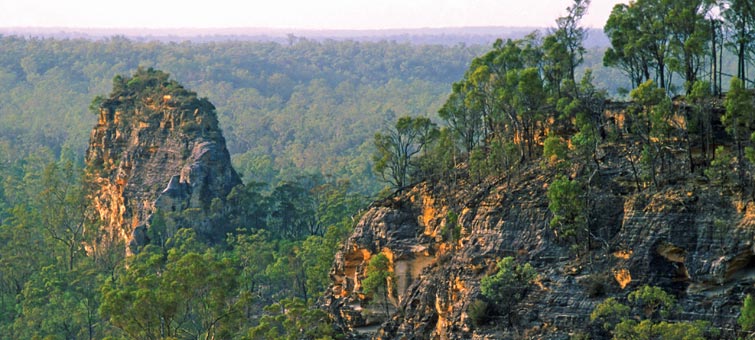Carnarvon Station Reserve, Queensland
The unknown microorganisms in our water table will be one of the groups under the microscope in October, as the Bush Blitz team surveys Carnarvon Station Reserve – a Bush Heritage property in central Queensland.
Carnarvon covers a valley flanked by mountains that protects at least 10 threatened species including the nationally endangered northern quoll. The lowland woodlands and grasslands that cover much of Carnarvon’s valley floor are important additions to the rugged ranges protected in the neighbouring Carnarvon National Park.
The reserve sits within the Brigalow Belt bioregion, which is the one of the most extensive, fertile and well-watered areas in northern Australia. Its most productive ecosystems are both distinctive on a national scale and home to a number of threatened communities. The vast majority of the bioregion has been cleared of vegetation.
Beautiful landscapes of Carnarvon Station Reserve, Queensland
This expedition will include scientists from the Queensland Museum, Australian National Herbarium, University of NSW, Qld Department of Primary Industries and South Australia Museum, who will work closely with ecologists from Bush Heritage.
Scientific Team
- Bronwyn Collins – Australian National Herbarium (Vascular plants)
- Emma Toms – Australian National Herbarium (Vascular plants)
- Heather Janetzki – Queensland Museum (Mammals (particularly small dasyurids, micro bats, and rodents))
- Andrew Amey – Queensland Museum (Reptiles and amphibians)
- Christine Lambkin – Queensland Museum (Flies, dragonflies, general invertebrates)
- Noel Starick – Queensland Museum (Butterflies, moths, dragonflies, general invertebrates)
- Susan Wright – Queensland Museum (Ants, flies, dragonflies, general invertebrates)
- Anna Namyatova – University of New South Wales (True bugs)
- Barbara Baehr – Queensland Museum (Spiders)
- John Stanisic – Queensland Museum (Land snails)
- Remko Leijs – South Australian Museum (Stygofauna)
- Desley Tree – Department of Primary Industries QLD (Thrips)


